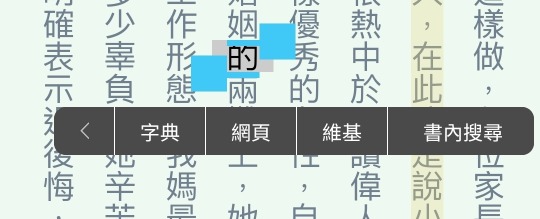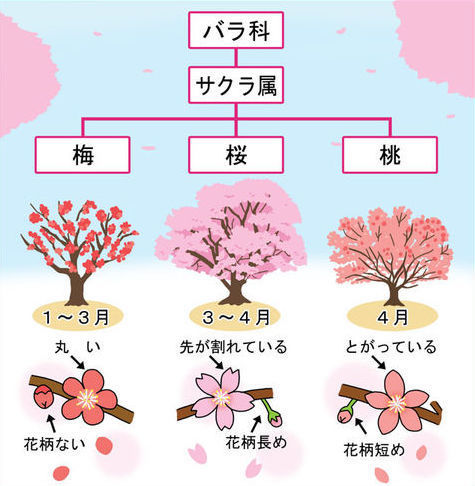Text









CMSC-110: Computer Concepts
Looking at Computers: Understanding The Parts Part.1
1 note
·
View note
Text
To-do (2/12/2024)
Japanese 101
✵ Create & study flashcards for Dialogue 1, 2, and 3 in Chapter 1 ( )
✵ Create & study flashcards for Dialogue 1 in Chapter 2 ( )
�� Read words & grammar rules for Dialogue 1 in Chapter 2 ( )
✵ Do hiragana practice ( )
✵ Review grammar rules & practice forming sentences ( )
✵ Attend class at 5:00pm ( )
Computer Science 110
✵ Take notes on Chapter 2 ( )
1 note
·
View note
Text
okayy maybe i'm exceptionally late to the party as usual but i just found this website called Glottolog
and what it is is basically a language catalogue. you can look up a specific language's family tree and this is useful etc etc but the real reason i'm showing you this is the following:

[click to enlarge]
so i just looked up kazakh via the "languages tab". you can search languages by name, top-level family, macro area, number of child dialects, latitude, longitude, and, if you happen to know it, ISO-639-3 or glottocode (the website's own code).
I searched via language name, and when I clicked Kazakh, I got this:

[click to enlarge]
a handy tree that shows me where exactly the language is located within its language family. if I scroll down it'll tell me whether or not that language is endangered, AND, IF I SCROLL FURTHER DOWN:

[click to enlarge]
it gives an entire list of resources for that specific language!!! I cropped the screenshot for readability purposes but the columns in this table are name (as in author), title (of the resource), any field (idk what that's supposed to be sorry), year, pages (as in how many pages does the resource have), doctype (e.g. grammar, dictionary etc.), and provider. the latter refers to the source bibliography that the resource was taken from.
now, this list won't conveniently link you to free pdfs of these resources, but it does give you the exact citation of the work if you click on 'citation' right next to the resource:

[click to enlarge]
so I think it's a great start for research, especially for languages that don't have many learners.
happy researching!!!
89 notes
·
View notes
Text
hiii i need a bit of help!
soo um… to sum it up; i never learnt how to study. and i want to learn how to study, mostlyyyy so i can learn japanese could i have some study tips or techniques, maybe? i've already figured out i learn best when reading if that helps ┐(´◡`)┌ otherwise um… no clue ;;
so umh... help pls,,
105 notes
·
View notes
Text
Reading Chinese Ebooks on 讀墨 ReadMoo
For the past few years, I've labored under the assumption that I can't read Chinese ebooks because I just can't focus on them. However, I recently saw someone on insta mention the app 讀墨. I was intrigued, and decided to give it a try. And wow, what a shock, I can in fact read Chinese ebooks! I just have to change it to vertical text and make the font very large.
So the past couple weeks I've been trying to read more consistently using 讀墨. The book I started with was slow going at first, which almost made me give up; it was the Chinese translation of The Last Cuentista by Donna Barba Higuera. This book really wasn't for me, and I didn't want to keep reading it. So instead of just giving up, I bought one more book and tried again: 《你的孩子不是你的孩子》 by 吳曉樂 (yes, it is the basis for the Netflix show of the same name).
I devoured the book in under a week. So yeah, I think Chinese ebooks work for me if I like the book.
Below is gonna be an overview of the app, and my thoughts on it so far. It's not comprehensive though, since there's a lot of things on this app I haven't explored yet (like the audiobooks).
***Please note that 讀墨 is a Taiwanese app, and as such it mainly offers books written in traditional characters. There are apparently books written in simplified available, but I haven't explored those since I'm fine reading traditional.***
Buying Books
Buying books is fairly simple. You make an in-app purchase of coins, which you then use to buy books. Note: As of writing this, I have recently recently received a notification from the app that their book purchasing system will be changing soon. Instead of being able to buy the books in the app, you'll have to log in to your account in a browser and buy the books there. The books will apparently then appear on the app for you to read.
As it stands, 210 coins costs $10.99, and the books I've bought have ranged in price from 210 to about 300 coins. That means the books cost ~$11-$16, just like a regular book. This could be pricey, but since I'd otherwise be paying for international shipping if I were buying a physical copy, this feels like a bargain to me. (For me, shipping books from Taiwan/China to the US typically doubles the price of the purchase rip)

Once you buy the book, it's in your library for you to start whenever you please.
As for browsing for books, I haven't gone too in-depth yet. I went in to 讀墨 with a TBR and went for books off that list exclusively. When it comes to buying books online, I almost always go on whatever site I'm buying from with a list of the books I'm thinking of buying. I get recommendations elsewhere (e.g., Goodreads or insta).
Reading Books
The 讀墨 reading interface is pretty typical for an e-reader app. What makes me like it way better than other apps I've used is that it has a lot more customization options.
For starters, you've got 6 options for page/text color. There's the typical black, white, and sepia, but there's also blue and green! I use the 奶綠 option, since I don't like having such a stark contrast between the text and the background when reading on my phone for long periods.
Then there's the options for changing the text size and spacing. You can make it bigger or smaller as you please, and put more or less space between each line of text.
You can also change the font. There's 8 different fonts you can choose from, including the default. There's even a font that puts 注音 next to each character! You can see a preview of that one in the photo below.
And then, there's the option to switch between horizontal and vertical text. The default is horizontal text, but I've come to prefer vertical when reading Chinese novels. If you go to your settings on your profile, you can make vertical text your default, which is what I ended up doing.

Like any good e-reader, there's options to highlight text. There's four different colors you can use (pink, yellow, purple, and blue). If you go the ToC, you can find all of your highlights and filter by color of highlight. Super convenient, since I've been using pink to highlight words/phrases I don't know or find interesting and yellow to highlight key sentences/paragraphs.

Aside from highlighting, when you select text you have the option to look the characters up in a dictionary or online. I've been getting a lot of errors with this recently, but I'm wondering if that's just my phone acting weird? It worked perfectly fine when I first started using the app. Anyways, the dictionary it takes you to is 夢典 MoeDict and it opens in a browser. This personally is a bit annoying bc I actually have this dictionary app installed on my phone, but this is a minor complaint. The dictionary opening in a new browser tab is a non-issue.

Reading Stats
Now, I'm a big dork and love to track my reading stats. To my great satisfaction, 讀墨 keeps track of some stats. The main one is time spent reading. You can set a daily goal (the minimum is 20 minutes), and if you reach it you get a nice checkmark on the calendar. The calendar doesn't update until the very end of each day, so if you've reached your goal for the day it won't show on the calendar until the next day.
Also, keep in mind time differences between where you live and Taiwan. I'm ~12 hours behind Taiwan, so the app doesn't start a new day until around noon for me.
Below the calendar, there's a chart that shows your total reading times for a week, month, or year. I normally can't be bothered to time my reading (especially not when I'm reading physical books) so this is cool to see. I think when it comes to reading in Chinese, being timed is more interesting because I'm able to more clearly gauge progress.


And below all that, there's a breakdown of the genres you read. I don't pay much attention to genre when choosing books, so I don't find this one quite as interesting.

(tfw you're reading a non-fiction book about a tutor so your main genre becomes 教育)
Overall Thoughts
So yeah, I've enjoyed myself so far. Aside from the reading interface, I find the app pretty easy to navigate. I spent a bit of time just clicking around and was able to figure out what's what pretty quick.
Like I said, this isn't a comprehensive review, but I'd recommend giving the app a try if you're willing/able to put down money for ebooks and are able to read traditional. It feels worth the money for me, since the interface is pretty customizable and easy to use.
If you're wondering where to find simplified ebooks, idk. This is my first real foray into Chinese ebooks, so I don't really know where to find them for simplified or traditional. I have heard that it is a little easier to pirate Chinese ebooks since their copyright laws are a little different than ours in the US?
73 notes
·
View notes
Text





CMSC-110: Computer Concepts
1 note
·
View note
Text
To-do (2/11/2024)
Japanese 101
✵ Create & study flashcards for Dialogue 1, 2, and 3 in Chapter 1 ( )
✵ Create & study flashcards for Dialogue 1 in Chapter 2 ( )
✵ Read words & grammar rules for Dialogue 1 in Chapter 2 ( )
✵ Do hiragana practice ( )
✵ Review grammar rules & practice forming sentences ( )
Computer Science 110
✵ Read + take notes on Chapter 2 ( )
✵ Take Quiz 2 (✘)
✵ Solve Chapter 2 project (✘)
✵ Do Chapter 1 web project (✘)
✵ Do Chapter 2 web project (✘)
0 notes
Photo

「梅・桜・桃」の違い、わかりますか?
どれもバラ目バラ科サクラ属の植物なので、似ているのも当然です。種類によっては例外もありますが、見分けるポイントは花の付き方と花びらの形、そして咲く時期です。
__
Differences between:
Ume / 梅 / plum blossom
Sakura / 桜 / cherry blossom
Momo / 桃 / peach blossom
These Rosaceae family of flowers are all culturally cherished throughout history of Japan, symbolising the beginning of new year and spring. Yet they are often confused!
Here are some tips: plum blossoms as early as January with round petals; cherry blossoms March to April and have a small split at the end of each petal; peach blossoms in April and have pointy petals.
4K notes
·
View notes
Text
To-do (2/10/2024)
Japanese 101
✵ Create & study flashcards for Dialogue 1, 2, and 3 in Chapter 1 ( )
✵ Create & study flashcards for Dialogue 1 in Chapter 2 ( )
✵ Read words & grammer rules for Dialogue 1 in Chapter 2 ( )
✵ Do hiragana practice ( )
✵ Review grammar rules & practice forming sentences ( )
Computer Science 110
✵ Read + take notes on Chapter 1 Part 2 (✘)
✵ Read + take notes on Chapter 2 ( )
✵ Take Quiz 1 (✘)
✵ Take Quiz 2 ( )
✵ Solve Chapter 1 project (✘)
✵ Solve Chapter 2 project ( )
✵ Do Chapter 1 web project ( )
✵ Do Chapter 2 web project ( )
0 notes
Text
跳舞 Dance Vocab
来自:Yoyo Chinese Upper Intermediate Unit 28
生词 Words:
肚皮舞 / dù pí wǔ / belly dance
现代舞 / xiàn dài wǔ / modern dance
民族舞 / mín zú wǔ / folk dance
爵士舞 / jué shì wǔ / jazz dance
交际舞 / jiāo jì wǔ / ballroom dance
街舞 / jiē wǔ / hiphop or street dance
传统舞 / chuán tǒng wǔ / traditional dance
顺便问一下 / shùn biàn wèn yì xià / by the way, can I ask...
语法 Grammar:
都 / already
从... 就... 了 / to [do something] since [time]
大概 / approximately, about
能有 / about, maybe about...
例子 Examples:
都晚上七点了,我们该吃晚饭了。It's already 7pm, we should eat dinner.
我从六岁就开始学弹钢琴了。I have been learning piano since I was only 6 years old.
她的舞友跳的(种)是中国传统舞。(The type of dance) her dance friends are doing is traditional chinese dance.
顺便问一下,你们都学跳舞多长时间了?By the way can I ask, how long have you all been studying dance?
我学了大概能有六七年了。I've learned for about maybe 6-7 years.
103 notes
·
View notes
Text


CMSC-110: Computer Concepts
0 notes
Text




Spring comes quickly; overnight the plum tree blossoms, the warm air fills with bird calls
3K notes
·
View notes
Text
Hey did you know I keep a google drive folder with linguistics and language books that I try to update regularly
UPDATE because apparently not everyone has seen this yet the new and improved version of this is a MEGA folder
I know there’s so many more urgent things but if you like this resource you may consider buying me a ko-fi to keep this project alive
220K notes
·
View notes
Text

🕰 Introduction
Name: Basil
Age: 18
Subjects: Computer science, Programming, Japanese, Korean, Chinese, German
About me: Hello! My name is Basil, and I'm an 18 year old college student, who also works at my local library as a library page! I love learning languages, as well as fooling around with computers, and my favorite book is The Picture of Dorian Gray. I also love the podcast The Magnus Archives, and I wear several different styles of J-fashion, as well as coquette and dark academia. I follow back from my main fashion blog @cinnamon-swirlies.
☕ Thank you for reading!

#studyblr#langblr#dark academia#introduction#the magnus archives#the picture of dorian gray#codeblr#progblr#japanese#korean#chinese#german#computer science#programming
10 notes
·
View notes